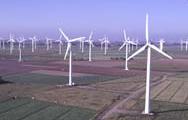|
|
|
Morocco
Stakes Energy Future on Wind Power Morocco has set a November 1 deadline for bids to build two wind farms on the west coast of Africa. Nine consortiums including companies from the United States, France and Spain are in the running for the contract worth $200 million. The state owned Office National de l'Electricite (ONE) said yesterday that it expects to choose the winning bid by the end of the year. The 200 megawatt (MW) wind farms will be built in Tangiers and Tarfaya, locatedat the northern and the southern tips of the country. While wind power has traditionally been seen as a small scale energy alternative with non-grid applications, Morocco is basing a significant portion of its energy policy on wind. Currently, the country imports 90 percent of its energy, with oil used to generate 80 percent of electricity and hydropower used for 14 percent. Morocco has embarked on an ambitious program to develop solar, wind and other renewable energy sources. The wind plants are part of a series of windfarms that will diversify Morocco's dependance on thermal power plants. The 200 megawatt (MW) wind farms will be built in Tangiers and Tarfaya, located at the northern and the southern tips of the country. Morocco, home to 28 million people, has seen demand for electricity grow annually by seven percent in the 1990s. Currently, about half of Morocco's households have electricity, but in rural areas where half the country's population lives, the electrification rate is only about 10 percent. In cities, it is about 90 percent. To fill the gap, the Moroccan government launched the Global Rural Electrification Program in 1996. About $1.4 billion will be invested in the program, which aims to bring electricity to 90 percent of rural areas by 2010. The Tangiers windfarm near the Strait of Gibraltar would have a capacity of 140 MW, while the Tarfaya facility would be 60 MW. Tarfaya is next to Western Sahara, a former Spanish colony whose ownership is in dispute between Morocco and the Polisario liberation group. Among the competing consortia are AES Corporation, Enron Wind Corporation and Alstom of the U.S, and ENDESA of Spain. A 50 MW wind farm at Koudia el Beida is expected to be operational this year. Built by a consortium comprising Electricite de France, Banque Paribas and consulting engineers, Germa, the 84 windmills situated on an uninhabited ridge represent Africa's and the Arab world's first major wind farm. The Koudia el Beida wind farm, built at a cost of US$60 million, will supply two percent of Morocco's annual electricity needs. To produce the same output, fossil fuel power plants would release 230,000 tons of carbon dioxide, a greenhouse gas, into the atmosphere. . . .rs and posters with messages that demand jobs and an end to poverty. These foot-soldiers are mobilisi |

